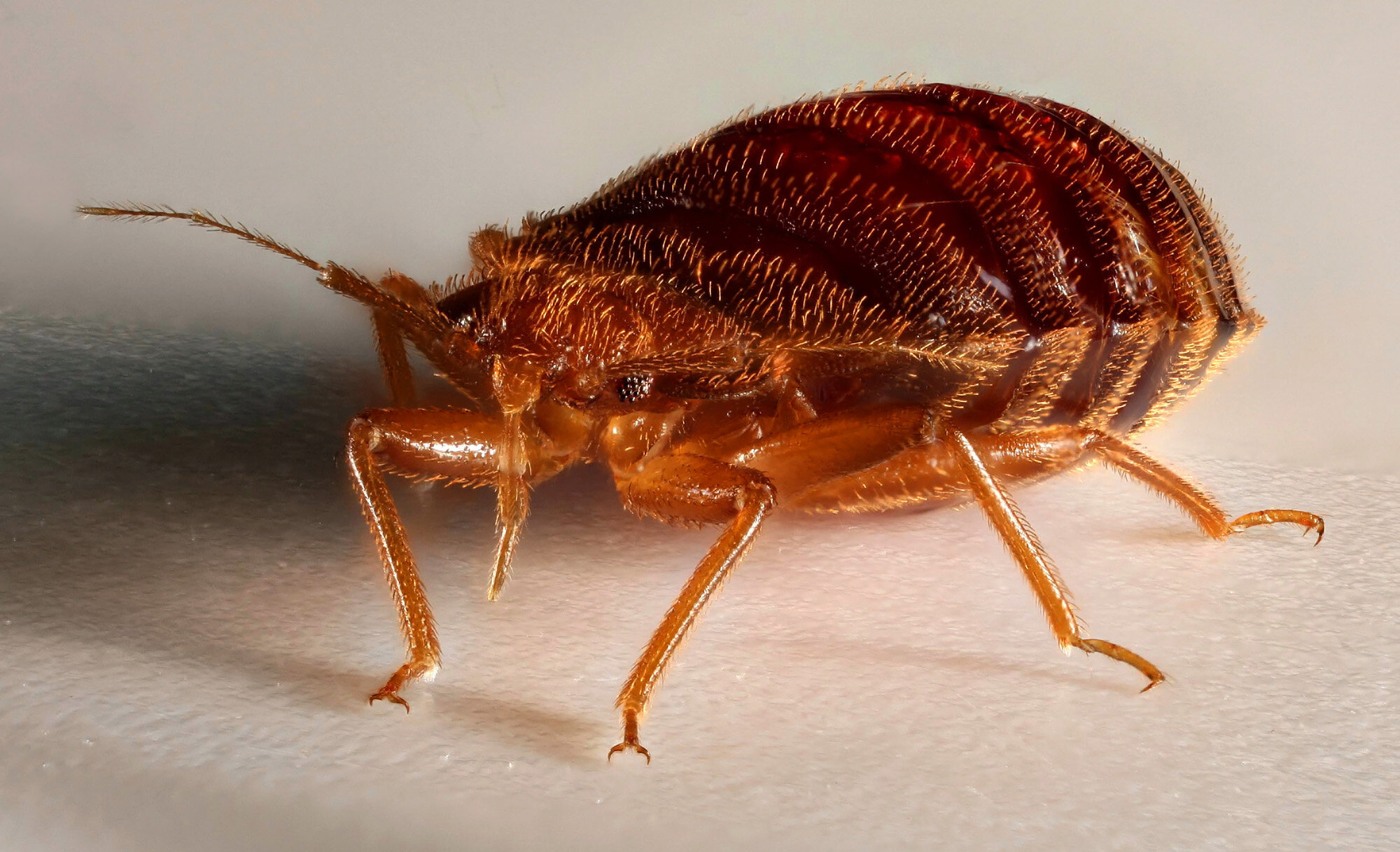The adult bed beg. They are about the size of an apple seed, 5mm or so, but may be larger if they have recently fed. From here.
Bed bugs have been an increasing presence in our lives since the 1980s. While outbreaks in New York city hotels left everyone itching, the bugs are an international menace. They have been reported in Canada, Germany, Australia and Israel. In a 2014 interview, Dr. Kosta Mumcuoglu, a parasitologist from the Hebrew University told The Jerusalem Post that the incidence of bed bugs had increased by 150% over a five-year period, and that they were developing resistance to insecticides. Bed bugs, it seems, have become a feature of modern living. Just like they were during Talmudic times, as discussed in today’s page of Talmud.
The Talmud spends some time discussing this pest because of its ability to leave blood stains that are similar in appearance to those that might render a woman ritually impure.
נדה נח, ב
שאין לך כל מטה ומטה שאין בה כמה טיפי דם מאכולת
There is no bed of any kind on which there are not several drops of blood of a louse.
“Bed bug infestations have been reported increasingly in homes, apartments, hotel rooms, hospitals, and dormitories in the United States since 1980”
A series of bites in a line is characteristic of bedbug bites. From Delaunay P. et al. Bedbugs and Infectious Diseases. Clinical Infectious Diseases 2011; 52(2):200–210.
From here.
Bed bugs are insects from the Cimicidae family. All species are obligate hematophages (meaning that they can only ingest and live on blood) but only two species, Cimex lectularius and Cimex hemipterus, readily feed on humans (though others may rarely do so as well). They are about 5mm long, the size of an apple seed, and are easily visible to the untrained eye, resembling small cockroaches. But you are more likely to see them after they have feasted in blood, when they may increase in length by 50% and weigh twice as much as a unsated bug. According to a thorough review of the subject in the Journal of the American Medical Association, bedbugs “generally avoid light, hide during the day, and feed at night. Hiding places are usually within 1 to 2 meters of suitable hosts and include seams in mattresses, crevices in box springs, backsides of headboards, spaces under baseboards or loose wall-paper, and even behind hanging pictures. Adult bed bugs have an average life span of 6 to 12 months and can survive up to a year without feeding.” I am itching already…
Over my years in the ER I saw many rashes that were from bed bugs, mostly, but not exclusively, in the homeless. Only about 30% of people bitten have a reaction to the bug bite, but in those who do the rash can be very uncomfortable. There are usually several raised red lesions in a line. Scratching can lead to bleeding, and in some cases to a local infection.
“ Cimicid infestations result in multimillion dollar damage in the hospitality industry, poultry industry, and private and communal households. Costs arise from payment for pest control, damage to social reputation, replacement of infested infrastructure, and claims for monetary reparation. ”
Areas and localities in Israel, in which there were treatments against bedbug infestations. Based on a survey of 143 “pest management professionals” in 2009. From Mumcuoglu K. Shalom U. Questionnaire survey of common bedbug (Cimex lectularius) infestations in Israel. Israel Journal of Entomology 2010:40; 1-10.
The Smell (and Taste) of a Bed bug
Today’s page of Talmud continues with these fun facts:
ת"ר פשפש זה ארכו כרחבו וטעמו כריחו ברית כרותה לו שכל המוללו מריח בו ארכו כרחבו לענין כתמים
This bedbug, its length is equal to its width, and its taste is like its foul smell. A covenant is made with it, i.e., it is a law of nature, that anyone who squeezes it will smell its foul odor.
Apparently, the foul odor which the Talmud describes resembles “rotting raspberries.” Most people cannot detect this smell - perhaps the Talmudic nose was more sensitive than our modern one, but today bed bugs are detected using a canine rather than a human nose. Dogs are widely employed by pest management companies, and from rigorous studies we know that dogs can detect even a single adult bed bug. Dogs can also discriminate live bed bugs from dead ones and in one controlled experiment in hotel rooms, “dogs were 98% accurate in locating live bed bugs.” The dogs could also differentiate the live bed bugs from other general household pests, such as cockroaches, termites, and carpenter ants. And so thankfully, there is no-longer a need to smell or taste a bed bug in order to identify it. It’s too bad that canine detection was not available in Babylon a couple of thousand years ago.





